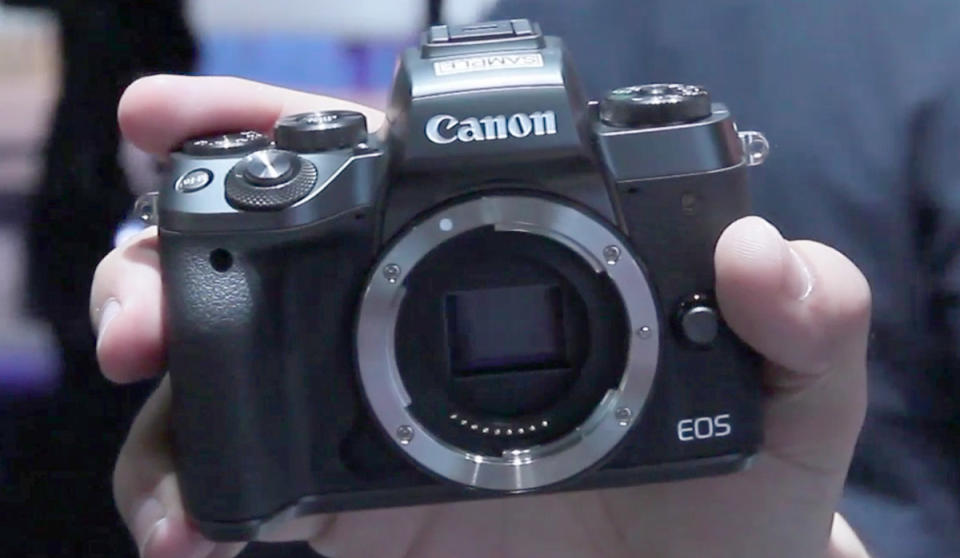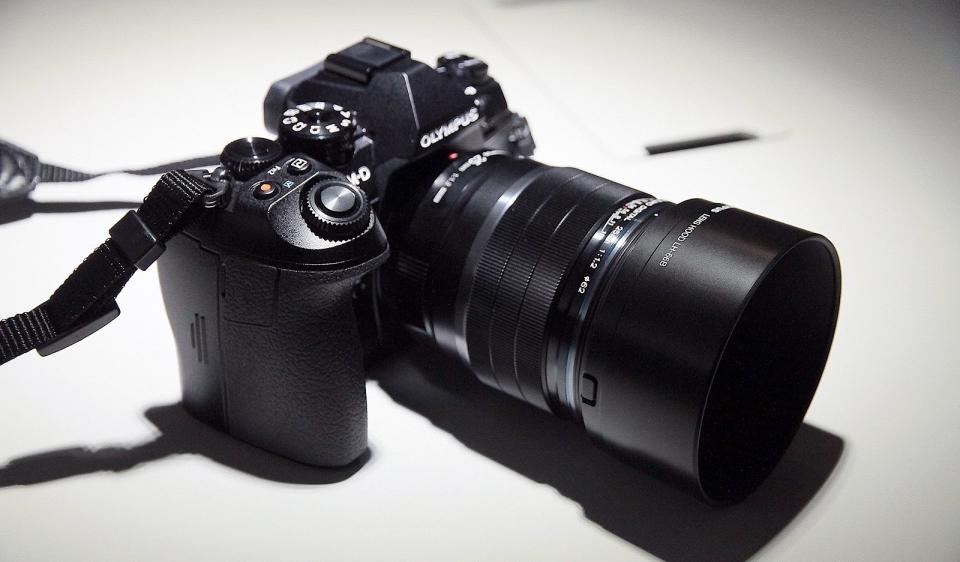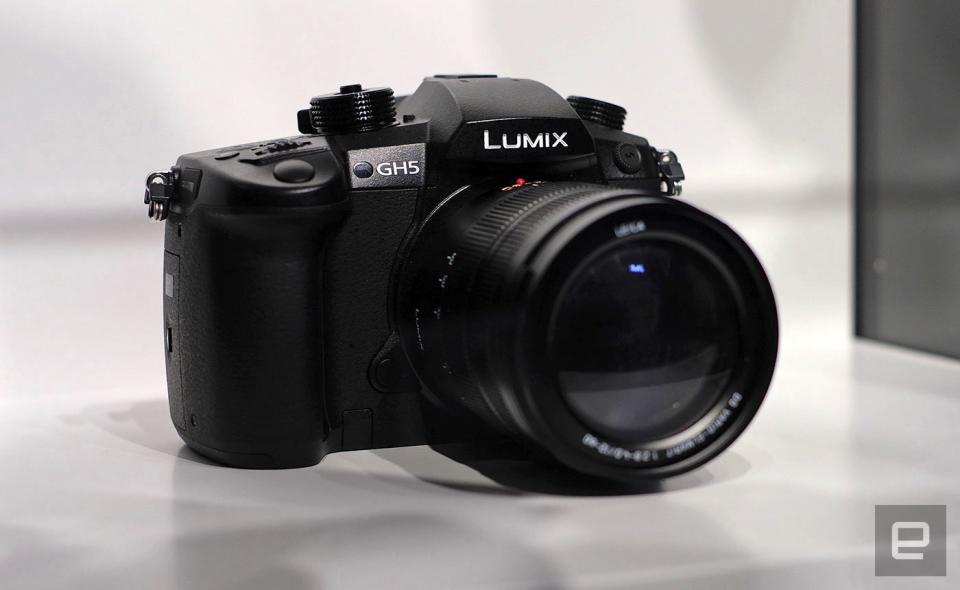At Photokina, camera makers carve out their territory
Each is angling for a different piece of a shrinking market.

Let this sink in: Since 2010, digital camera sales have fallen from around 120 million to 40 million units. The main reason, obviously, is that consumers can fulfill most of their photography needs with a smartphone. That leaves manufacturers a small but profitable high-end market. Judging by what I saw at Photokina, however, Canon, Nikon, Fujifilm, Olympus, Sony and Panasonic are all targeting that niche in different ways.

Canon is still popular, judging by the throngs clamoring to try the new 5D Mark VI (and our Twitter poll). The company just released the EOS M5, easily its best mirrorless camera to date. The model has some nice features, like 7 fps shooting and a fast Dual Pixel contrast autofocus system that tracks moving subjects for video. The fact that it jumped into the mirrorless game late is starting to show, though.
It's lagging behind competitors, especially considering the $980 price (body only). For the same sum, you can get a Sony A6300 mirrorless camera with a similar sensor that shoots 4K instead of 1080p and has better low-light capability and superior (11 fps) burst shooting.
Canon's bread and butter is still DSLRs, but as mirrorless cameras improve, folks are going to switch. Personally, I don't want to lug around my Canon DSLR anymore when a Fujifilm or Sony model is just as good and weighs half as much. In other words, Canon's next mirrorless model had better be at least on par with its rivals.

Nikon is doing even less than Canon in mirrorless as rumors swirl around the future of the Nikon 1 series. While still leaning on its pro DSLR market, the Japanese company is now banking on a whole new category: virtual reality. Nikon announced two new KeyMission action cameras (the 270 and 85), plus an October release date and $500 price for its impressive-looking 4K KeyMission 360 camera. Though known for its optics, Nikon has nailed the stitching software on the KeyMission 360, judging by a (very short) demo.
It is again targeting its bread-and-butter pro market by pitching the KeyMission 360 to DSLR photographers as a way to capture VR video during photo shoots. (It even has a hot-shoe mount that lets you stick it on top of a D700 or D5.) But this is a side project for Nikon right now; like Canon, it really needs to make headway in the mirrorless market.

Is Olympus held back by its smallish Micro Four Thirds sensor, compared with Sony's, Canon's and Fujifilm's APS-C models? The new OMD-EM1 Mark II flagship will test that theory. It seemingly has everything a pro photographer would need: 18 fps shooting speed with AF and exposure tracking (up to 60 fps with AF locked), 4K video, a stellar EVF and a body that's as lovely to hold as it is to look at. The company also revealed a new 25mm f/1.2 25mm lens, allowing the bokeh and light sensitivity that pros expect.
Judging by several conversations with colleagues at the show, however, many won't even consider it with that sensor. We don't know the price yet, but if the OMD-EM1 II is the same as the first model ($1,500), buyers will be more tempted by, say, Sony's $1,600 (body only) Alpha A7 II, which has a full-frame sensor -- twice as large as that on the Olympus model.

Panasonic again emphasized video at Photokina. The three cameras it introduced at the show all feature 4K, and the freshly unveiled GH5 (due in 2017) adds internal 10-bit, 4:2:2, 60 fps recording, making it a truly professional-grade product. Even the photo features are video-oriented. Panasonic touted "4K Photo" and upcoming "6K Photo" as features that let you take 18-megapixel stills at 30 fps. That way, photographers can choose the perfect image from an action sequence.
Like Olympus, Panasonic is hindered by the Micro Four Thirds format. The small sensor is an advantage for video, though, striking the right balance between too much and too little depth of field. However, other competitors, particularly Sony, could step on Panasonic's turf by including 10-bit or even 6K video in future models.
Speaking of the sort, Sony not only makes the sensors used by most other manufacturers but has an excellent, well-rounded camera lineup of its own. Its latest mirrorless E-mount models, in both the APS-C and full-frame categories, have generally received raves. At Photokina, it reminded us that it also makes Alpha mount SLT (single-lens translucent mirror) by launching the flagship Alpha A99 II.
The A99 II has the specs you'd expect from a $3,600 DSLR. That includes a high-res 42.4-megapixel sensor, 5-axis image stabilization and 12 fps RAW burst speeds. It's not messing around with video either, as the A99 II does 4K at 4:2:2 quality and, provided you use the cropped Super-35 mode, no pixel-binning. Sony's lineup has few weaknesses, except perhaps one: Its full-frame lens selection is limited and expensive.

Finally, there's Fujifilm, which created the most Photokina buzz with its GFX 50S medium-format model. Due early next year, the 50.4-megapixel camera is the first in a brand-new system. It was launched with three new lenses, each capable of resolving at least 100 megapixels. The company told Engadget that its X-series models already stand up against rivals' full-frame cameras, so it wanted to jump the category altogether.
Fujifilm packed the sensor into a relatively compact DSLR-size body. It's not going to be cheap -- less than $10,000 was all that the company would say. But it instantly becomes a top choice for medium-format photographers considering Pentax, Hasselblad or Phase One. It could even take a bite out of Nikon and Canon's high-end DSLR market for fashion, architectural and other photographers who want as big a sensor as possible.
My takeaway from Photokina 2016 is that we're living in a golden age of high-end digital cameras -- a boon for consumers. Things are less warm and fuzzy for manufacturers, however. If overall sales continue to decline, Darwinism could take its toll on brands that don't innovate fast enough. I'm looking at you, Canon and Nikon.
We're live all week from Cologne, Germany, for Photokina 2016. Click here to catch up on all the news from the show.
